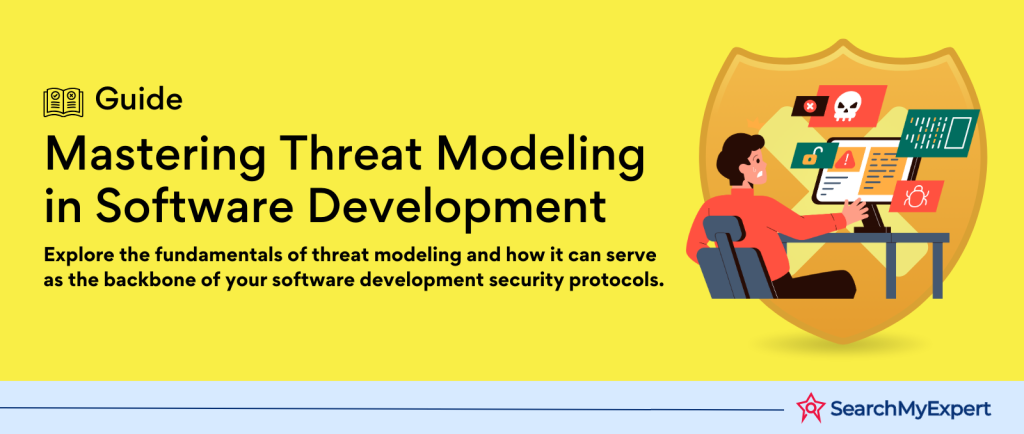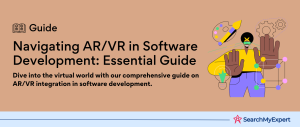What is threat modeling?
Threat modeling is the process of identifying and assessing security risks to a software system. It involves understanding the system’s assets, threat agents, attack vectors, and risks, and developing mitigations to reduce those risks.
Why is threat modeling important in software development?
Threat modeling is important in software development because it helps to ensure that security is considered throughout the development lifecycle. By identifying and addressing security risks early on, developers can help to prevent costly and time-consuming vulnerabilities from being introduced into the system.
Benefits of threat modeling
There are many benefits to threat modeling, including:
- Improved security: Threat modeling helps to identify and assess security risks, which can then be mitigated to improve the security of the system.
- Reduced costs: Threat modeling can help to reduce the costs of fixing security vulnerabilities after they have been introduced into the system.
- Increased confidence: Threat modeling can help to increase confidence in the security of the system, both for the development team and for stakeholders.
- Improved communication: Threat modeling can help to improve communication between the development team and security professionals, which can lead to better security outcomes.
When to conduct threat modeling
Threat modeling should be conducted at all stages of the software development lifecycle, from requirements gathering to deployment and maintenance. However, it is particularly important to conduct threat modeling early in the development lifecycle, when it is less expensive to make changes to the system.
Threat Modeling Process
The threat modeling process typically consists of the following steps:
- Identify assets: The first step is to identify the valuable assets in the software system. These assets could include data, functionality, and hardware. It is important to understand the security requirements for each asset.
- Identify threat agents: The next step is to identify the threat agents who could pose a threat to the system’s assets. Threat agents could include external attackers, malicious insiders, or even accidental users. It is important to understand the capabilities and motivations of each threat agent.
- Identify attack vectors: An attack vector is the path that a threat agent could take to exploit a vulnerability and access or damage an asset. It is important to identify all of the potential attack vectors for each asset.
- Assess risks: Once the assets, threat agents, and attack vectors have been identified, the next step is to assess the risks associated with each attack vector. This involves considering the likelihood and impact of each attack.
- Identify and implement mitigations: The final step is to identify and implement mitigations to reduce the risks associated with each attack vector. Mitigations could include security requirements,
design changes, or implementation controls.
The threat modeling process can be iterative. As the system design evolves, the threat model should be updated to reflect the changes.
Here is an example of how the threat modeling process can be applied to a simple web application:
Assets:
- User data (e.g., names, email addresses, passwords)
- Credit card data
- Financial data
- Business logic
Threat agents:
- External attackers
- Malicious insiders
- Accidental users
Attack vectors:
- SQL injection attack
- Cross-site scripting attack
- Broken authentication and session management
- Insecure direct object references
- Sensitive data exposure
Risks:
- Unauthorized access to user data, credit card data, financial data, or business logic
- Data corruption or destruction
- Denial of service attacks
Mitigations:
- Implement input validation to prevent SQL injection attacks.
- Implement output encoding to prevent cross-site scripting attacks.
- Use strong authentication and session management practices.
- Validate all direct object references.
- Encrypt sensitive data at rest and in transit.
Threat Modeling Techniques
There are a variety of threat modeling techniques that can be used to identify and assess security risks. Some of the most common techniques include:
- Data flow diagrams (DFDs): DFDs are visual representations of the flow of data through a system. They can be used to identify assets, attack vectors, and risks.
- Attack trees: Attack trees are hierarchical diagrams that show the different ways that an attacker could exploit a system. They can be used to identify attack vectors and risks.
- Threat matrices: Threat matrices are tables that map threats to assets and attack vectors. They can be used to prioritize risks and identify mitigations.
- STRIDE threat categorization framework: STRIDE is a framework for categorizing threats based on their impact on the system’s assets. It can be used to identify threats and develop mitigations.
- DREAD risk assessment model: DREAD is a model for assessing the risk of each attack vector. It takes into account the likelihood, impact, damage, reproducibility, exploitability, and detectability of each attack vector.
- Microsoft SDL Threat Modeling Tool: The Microsoft SDL Threat Modeling Tool is a free tool that can be used to create and manage threat models.
Which threat modeling technique to use depends on the specific needs of the project. For example, DFDs can be useful for identifying assets and attack vectors, while attack trees can be useful for identifying attack vectors and risks. Threat matrices can be useful for prioritizing risks and identifying mitigations, while STRIDE and DREAD can be useful for assessing risks.
Here is an example of how a threat modeling technique can be applied to the web application example from the previous step:
DFD:
The following DFD shows the flow of data through the web application:
[DFD of a simple web application]
The DFD can be used to identify the following assets:
- User data (stored in the database)
- Credit card data (stored in the database)
- Financial data (stored in the database)
- Business logic (implemented in the application code)
The DFD can also be used to identify the following attack vectors:
- SQL injection attack (through the login form)
- Cross-site scripting attack (through the user profile page)
- Broken authentication and session management (through the login form)
- Insecure direct object references (through the user profile page)
- Sensitive data exposure (through the user profile page)
Attack tree:
The following attack tree shows the different ways that an attacker could exploit the web application:
[Attack tree for a simple web application]
The attack tree can be used to identify the following attack vectors:
- SQL injection attack (through the login form)
- Cross-site scripting attack (through the user profile page)
- Broken authentication and session management (through the login form)
- Insecure direct object references (through the user profile page)
- Sensitive data exposure (through the user profile page)
Threat matrix:
The following threat matrix maps the threats from the attack tree to the assets from the DFD:
| Threat | Asset |
|---|---|
| SQL injection attack | User data |
| Cross-site scripting attack | User data |
| Broken authentication and session management | User data |
| Insecure direct object references | User data |
| Sensitive data exposure | User data, credit card data, financial data |
The threat matrix can be used to prioritize the risks and identify mitigations. For example, the risk of a sensitive data exposure attack is high, so it is important to implement mitigations such as encrypting sensitive data at rest and in transit.
Best Practices for Threat Modeling
There are a number of best practices for threat modeling, including:
- Start early: Threat modeling should be started as early as possible in the software development lifecycle, ideally during the requirements gathering phase. This will help to ensure that security is considered throughout the development lifecycle.
- Involve the whole team: Threat modeling is a team activity. It is important to involve all stakeholders, including developers, security professionals, and product managers. This will help to ensure that all perspectives are considered and that the threat model is comprehensive.
- Use a structured approach: There are a number of structured threat modeling methodologies available, such as STRIDE and DREAD. Using a structured approach will help to ensure that the threat modeling process is thorough and consistent.
- Use threat modeling tools: There are a number of threat modeling tools available, such as the Microsoft SDL Threat Modeling Tool. Using a threat modeling tool can help to automate some of the tasks involved in threat modeling and make the process more efficient.
- Iterate and refine: Threat modeling is an iterative process. The threat model should be updated throughout the software development lifecycle as the system design evolves and new information becomes available.
Here are some additional tips for threat modeling:
- Focus on the assets: The primary goal of threat modeling is to protect the system’s assets. Keep the assets in mind throughout the threat modeling process and focus on identifying and mitigating threats to those assets.
- Think like an attacker: When identifying attack vectors, try to think like an attacker. What are the different ways that an attacker could exploit the system’s vulnerabilities to access or damage the assets?
- Be realistic: When assessing risks, be realistic about the likelihood and impact of each attack vector. Consider the capabilities and motivations of the threat agents who could exploit each attack vector.
- Use documentation: Document the threat model thoroughly. This will help to ensure that the threat model is understood and followed by the development team and security professionals.
Step 5: Conclusion
The importance of threat modeling in software development
Threat modeling is an important part of the software development lifecycle because it helps to ensure that security is considered throughout the development process. By identifying and assessing security risks early on, developers can help to prevent costly and time-consuming vulnerabilities from being introduced into the system.
Threat modeling can also help to improve the security of software systems by:
- Reducing the number of security vulnerabilities in the system
- Making it more difficult for attackers to exploit the system’s vulnerabilities
- Improving the ability of the system to detect and respond to attacks
Tips for getting started with threat modeling
If you’re new to threat modeling, here are a few tips to get started:
- Choose a threat modeling methodology. There are a number of different threat modeling methodologies available, such as STRIDE and DREAD. Choose a methodology that is appropriate for your project and your team’s experience.
- Get buy-in from stakeholders. Threat modeling is a team activity, so it’s important to get buy-in from all stakeholders, including developers, security professionals, and product managers. This will help to ensure that the threat modeling process is effective and that the results are implemented.
- Start small. Don’t try to threat model your entire system at once. Start by threat modeling a specific component or subsystem. This will help you to learn the threat modeling process and to get experience.
- Use a threat modeling tool. There are a number of threat modeling tools available, such as the Microsoft SDL Threat Modeling Tool. Using a threat modeling tool can help to automate some of the tasks involved in threat modeling and make the process more efficient.
- Iterate and refine. Threat modeling is an iterative process. The threat model should be updated throughout the software development lifecycle as the system design evolves and new information becomes available.
Navigate the digital landscape with software developers who lead and innovate!
Table of Contents
Toggle






